Corn is the number one crop in America and 88% of it is genetically modified (GMO). As many of us who follow global health studies know (beyond the western big pharma/food sponsored studies) GMO foods are shown to be a direct cause of many chronic conditions and diseases including cancer and Alzheimer's.
While (for now) it’s possible to find some fresh ears of heirloom corn on the cob (grown from non-GMO seed) during the summer when it is in season, it becomes a bit more complicated to find ways to enjoy heirloom corn all year round. Almost all frozen and canned corn purchased in the grocery store comes from GMO corn. My solution is to can a bushel of sweet heirloom corn for the year each August.
My desire to preserve sweet heirloom corn could be accomplished by freezing it. Fresh frozen corn is certainly less time consuming than canning. However… in a prolonged power outage, what’s in the freezer will need to be canned for preservation. Our whole house generator will run for one week to ten days while I can in the kitchen before the tank runs out of propane. Doing the math, we have three freezers and at that point I do NOT want to be pressure canning corn, but rather the meats into soups, stews, stir fries and the like.
So here are the steps I followed to can a year’s worth of sweet heirloom corn. By far, this is the messiest thing I've ever done in the kitchen, so I dress accordingly. I even remove all kitchen rugs until the cleanup is completed. Simply put – corn squirts. :-)
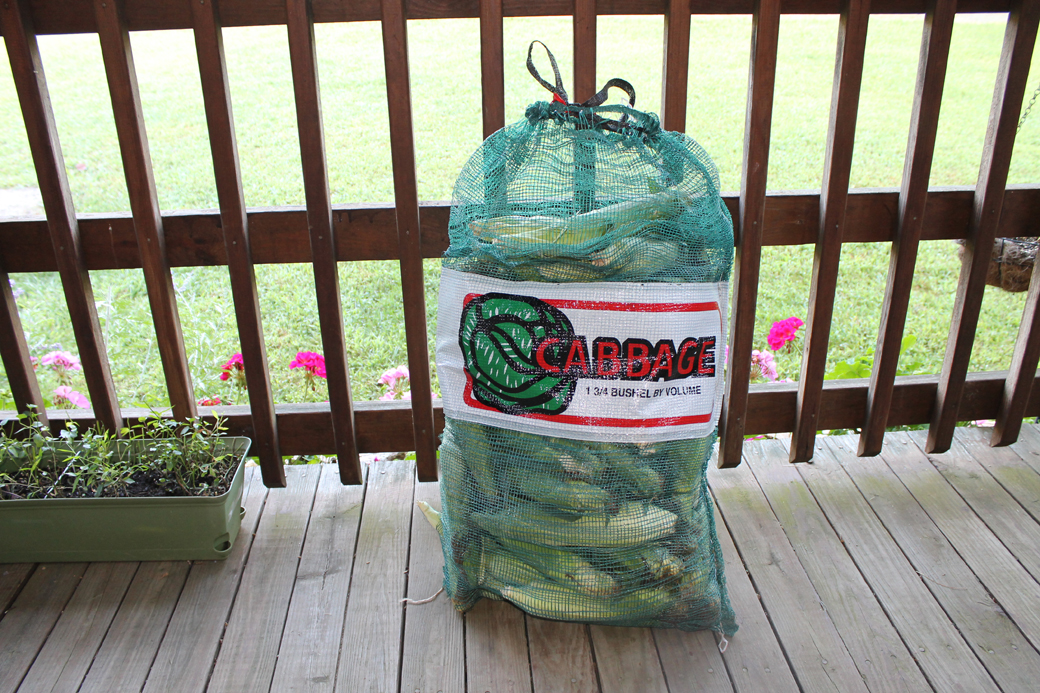
At a local farmers’ market, we secured a bushel of “Sweet Bi-Color Corn”, a delicious heirloom variety. It was grown local and picked that morning, which I confirmed by the moist and still golden silk on the ears.
Up and coffeed at 7am the next day, I began shucking on the front porch. One bushel is five dozen or sixty ears. Sure enough, there were exactly sixty ears in the netted bag. Every single ear was a good quality of plump yellow and white kernels.
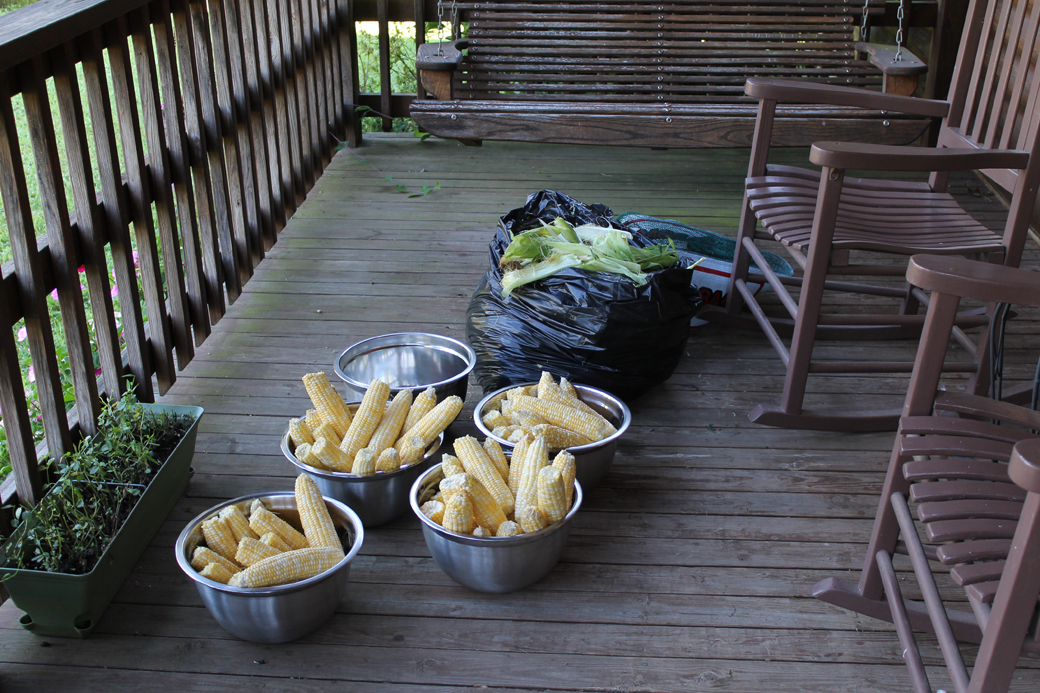
The next step was to blanch the ears, which would also serve to rinse and loosen any straggling silk hairs. Blanching is a simple process which alters the enzymes in the vegetables so they will retain texture and substance better when preserved. This is common in both canning and freezing. For corn, a big kettle with boiling water is prepared on the stove and a very large bowl of ice water is made ready and waiting in the sink. The ears are put into the boiling water for approximately 2-3 minutes, then into the ice water for the same time. I did about eight ears at a time and the task was quickly completed.
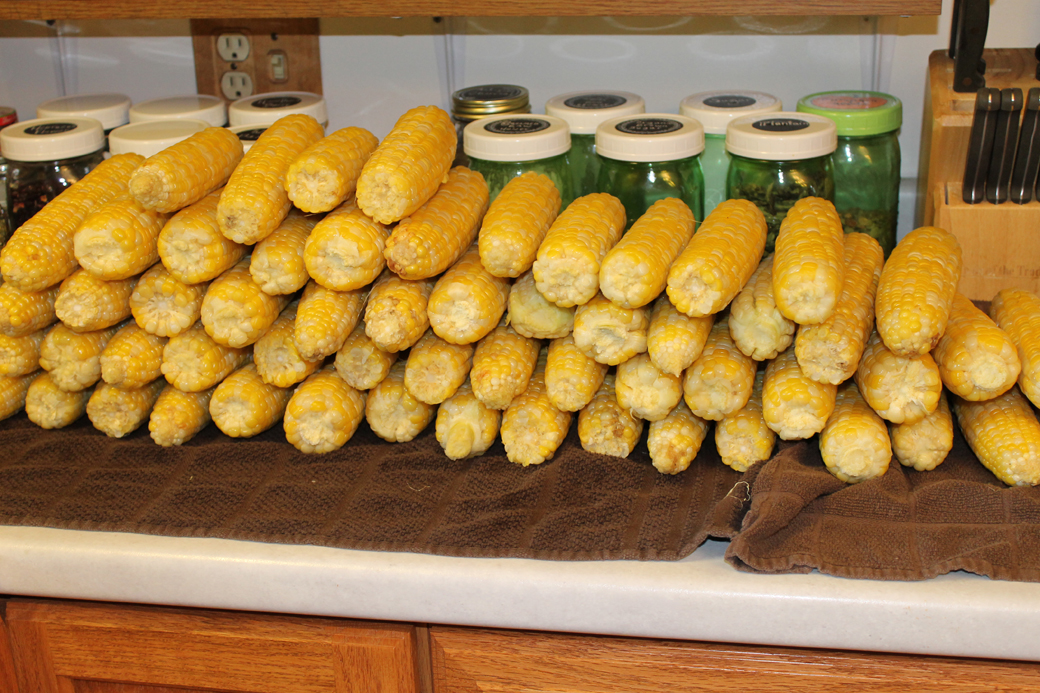
The mason jars, after being sterilized (sanitizing option on dishwasher is the easiest way), were counted out and waiting for the corn. The high math did not fail me in this task. One bushel of corn = five dozen ears = sixty ears. At two to two and a half ears per pint jar, I would need 24 to 30 pint jars for my haul depending upon the size of the ears.
Then the messy part begins. After clearing the blast area in preparation for magical squirting corn kernels, I cut the corn from the cob. Yes, there are tools that can and do make this easier. Cog has now vowed to get one for me for my own good and the good of our now sticky wood floors. Apparently some tools come with a splatter shield. Who woulda thunk? Lol
I place four of the clean jars by the cutting board and add ½ teaspoon of canning salt to the bottom of each empty jar. As I slice the corn off each cob, I attempt to take it off in slabs so the kernels stick together in a sheet. Anyone who had braces as a child, or children with them, knows this technique well. I turn the jars sideways to lay the kernel slabs in lengthwise, kernel side out, as I fill the jars. Cog found my method hilarious and sat at the counter providing a running commentary, occasionally asking me to just dump the corn into each jar and be done with it.
After filling the four jars within an inch of the top, I covered the corn with fresh water, wiped the rim and secured the lids. I repeated this process until all the corn was sliced and packed. It took exactly thirty jars this time.
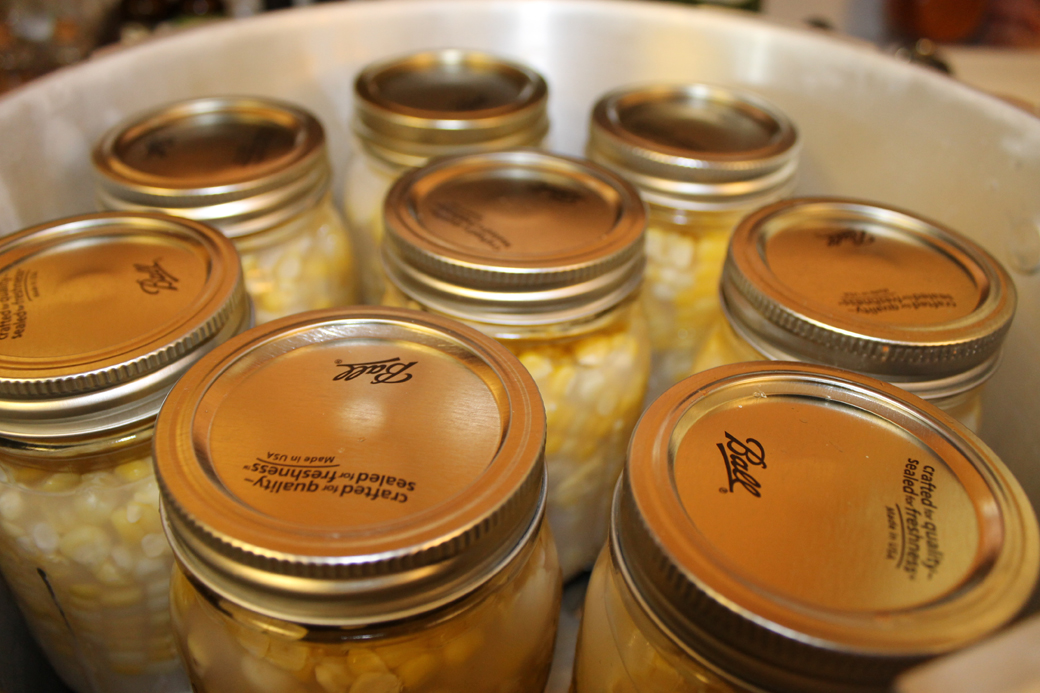
Into the pressure canners went the jars. Nine pints will fit in the bottom, and a rack atop them facilitates another nine. With a capacity to can 18 pints at a time, two canners on opposite sides of the kitchen placed on commercial hot plates running on different electrical circuits, I was able to accommodate all thirty jars at the same time. Because pressure canning is so time consuming, having two pressure canners is always a huge advantage. To see descriptions and links to purchase the exact models of canners and commercial hot plates I use, please see my Gateway Canning article.
Corn is pressure canned at the appropriate pressure (in our case 12 pounds at 3,000 ft. altitude) a total of 75 minutes for pints and 90 minutes for quarts. Since we ran two reactors (Cog’s term for the pressure canners) at a time, and the 12 pounds of pressure required to begin timing the process is never reached at exactly the same time, we each set our iPhone alarms for 75 minutes, his for the first canner, mine for the second. I find it is helpful to keep the men involved if they are around and reinforce the task could not be done as well without their participation. :-)
(Cog comment: I am extremely grateful my wife lets me think I'm the boss.....most of the time.)
I am pleased we found such fresh healthy heirloom corn and was more than happy to spend half a day to put it up so we can enjoy it all year round. I have read many accounts of people, who are careful to eat only the healthiest foods, say they love corn, but they have given up eating it because most is genetically modified. Because there is no law requiring proper GMO labeling, one just can’t be sure of the origin of what's on the store shelves and in the freezers. It was no accident we relocated to farm country where local reputable farmers produce heirloom and free range varieties of much of the food we seek to eat.
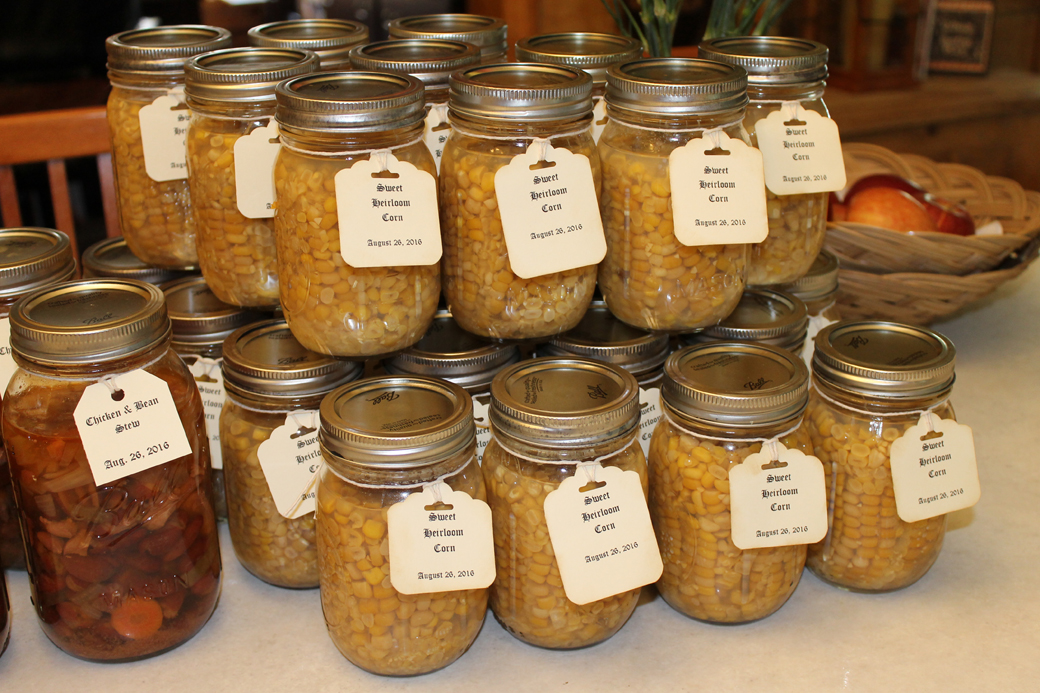
**Note: The fancy tags were originally packaging propaganda I developed to convince my family that organic and home cooked food was better than store bought. I soon discovered these tags were but a gateway drug to obsessive compulsive papercrafting or as the more colorful guys on Zero Hedge call it, my "overpriced crafty shit". lol
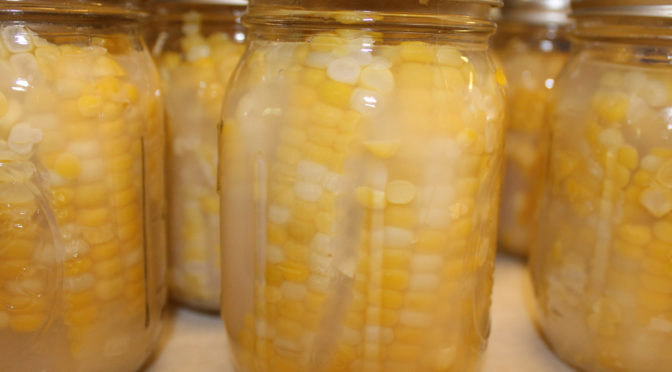

Absolutely Beautiful!!!
When I discovered TIF from an article Cog posted on ZH, this was the first article I read. I just read it again and my mouth watered for the second time. That looks delicious!
jackmo4rn,
I can’t remember the last time I purchased a ‘can’ of corn from the supermarket. Mrs. Cog keeps a well stocked pantry of various homemade and canned delights including soups, stews, sauces, pickles etc.
Cognitive Dissonance